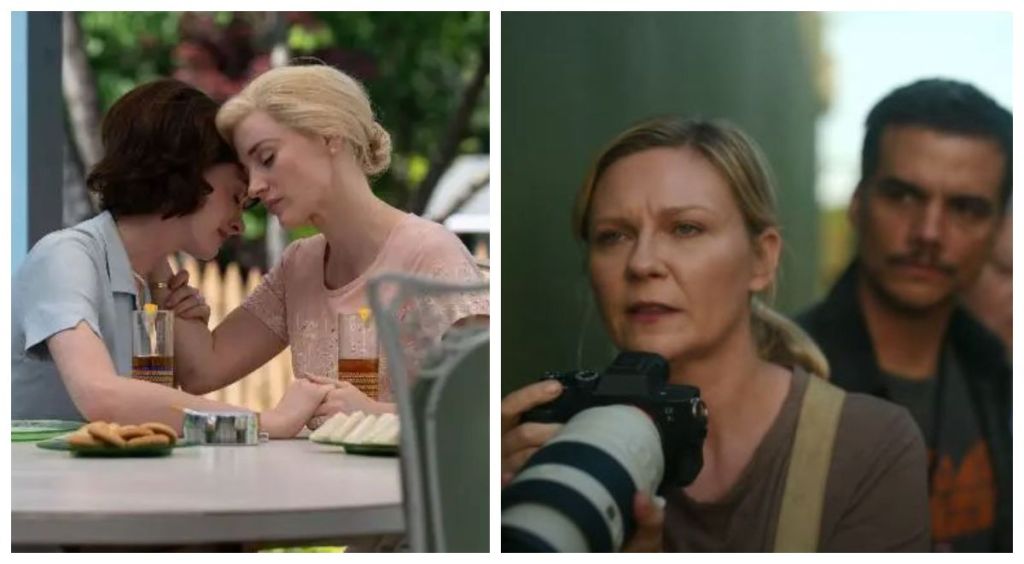When the Criterion Collection finally arrived in the UK back in 2016, my wish list was quickly made. One of the films on that list was “Mildred Pierce” (1945), directed by Michael Curtiz (known for “Angels With Dirty Faces” and “Casablanca“) and starring Joan Crawford. I’ve adored Film Noir for a very long time, with my first Criterion purchase being “Gilda” (1946), starring Rita Hayworth. While that film is a classic noir, my second purchase was “Mildred Pierce.” But is it truly a Film Noir? Yes and no!
If you were to try to describe this film, you could say it’s a noir-inspired melodrama. It is based on a novel written by the famous crime writer James M. Cain (known for “Double Indemnity” and “The Postman Always Rings Twice“). It also served as the launch pad for Crawford’s period at Warner Bros. Pictures. The actress spent the first 20 years of her acting career with MGM, starting in 1925. However, her relationship with the studio turned sour by the end of the 1930s, leading to her being labeled ‘Box-Office Poison.’ After several years off-screen, “Mildred Pierce” marked her comeback, which resulted in Crawford winning the Best Actress Award at that year’s Oscars. When you watch this film, you could be mistaken for thinking it plays like her biopic.
The opening scene is possibly the only part of “Mildred Pierce” that’s the closest to being a true Film Noir. We witness a man being gunned down in a beach house in Glendale, California, shrouded in mystery with only one clue: his last words, “Mildred.” Quickly, we then see Mildred (Crawford) attempting to take her own life by jumping off the end of a pier, only for a police officer to lend a friendly ear to our titular character.
Now, at the police station, Mildred learns that the dead man is her ex-husband, Monte (Zachary Scott). Who is his killer? Her current husband, Bert (Bruce Bennett), seems to be the prime suspect. Is he truly the killer?
As the film progresses, the tone becomes more melodramatic, depicting Mildred’s journey from rags to riches. Through flashbacks, we witness Mildred’s desire to improve her life and that of her two daughters. She starts as a waitress and eventually captivates the playboy Monte (Scott), leading to their marriage. However, her eldest daughter, Veda (Ann Blythe), begins to act like a spoiled brat, consumed by jealousy. She shows no respect for her mother, focusing solely on her own desires and heading a list of people who want a share of her mother’s success in the restaurants.
Even though many now recognize that “Mildred Pierce” isn’t a true Film Noir, it remains one of the great melodramas of the 1940s, and possibly of all time. The decade was a time when great women graced the big screen. Alongside Crawford, we had Katharine Hepburn, Barbara Stanwyck (Curtiz’s original choice for Mildred), Bette Davis, Rosalind Russell, and Judy Garland, among others. The list could go on and on; these women were box office gold. Shockingly, eight decades later, very few female actors can replicate the same star power and qualities.
Behind the noir-tinged melodrama sensibilities, we have a film that delves into the American class system as much as it does into greed and jealousy, which you could also say is an examination of Mildred’s choices in life and relationships, and what those choices have led to.
Whatever you want to call “Mildred Pierce” — noir, melodrama, or a hybrid — it’s a powerful film about women surviving and thriving in what was often referred to as a ‘man’s world.’ Trying to be strong in that world when you’ve created a monster you call a daughter. It’s classic Hollywood at its best, with a fantastic central performance from Crawford.
★★★★
Crime, Drama | USA, 1945 | 12 | Criterion Collection | Dir.Michael Curtiz | Ann Blyth, Joan Crawford, Zachary Scott, Bruce Bennett, Jack Carson,





Leave a comment